Linlin Tang
Two-person Graph Convolutional Network for Skeleton-based Human Interaction Recognition
Aug 12, 2022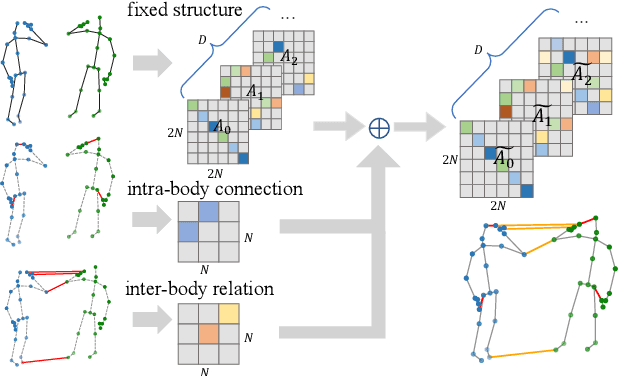
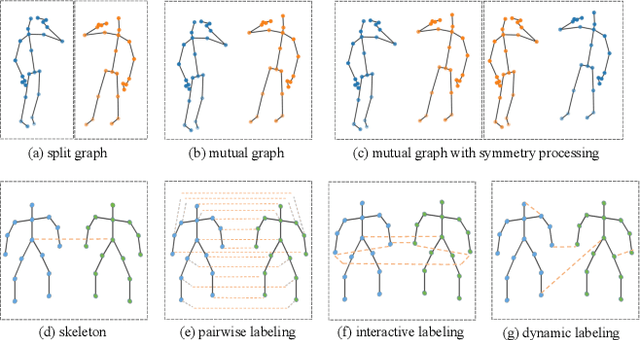
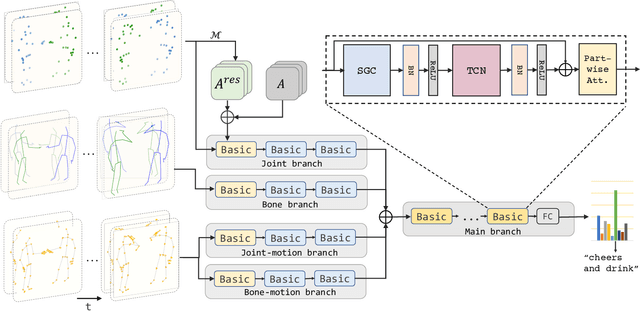
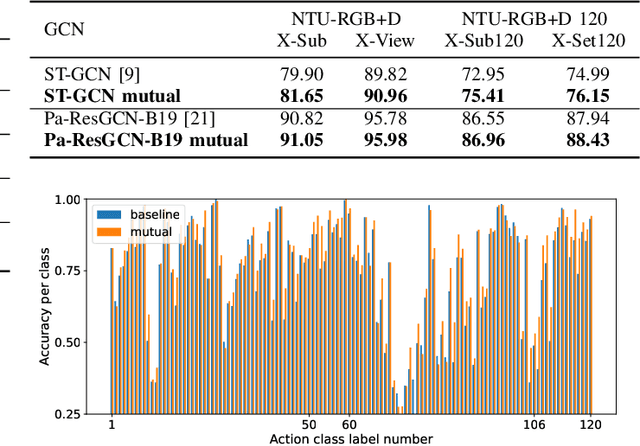
Abstract:Graph Convolutional Network (GCN) outperforms previous methods in the skeleton-based human action recognition area, including human-human interaction recognition task. However, when dealing with interaction sequences, current GCN-based methods simply split the two-person skeleton into two discrete sequences and perform graph convolution separately in the manner of single-person action classification. Such operation ignores rich interactive information and hinders effective spatial relationship modeling for semantic pattern learning. To overcome the above shortcoming, we introduce a novel unified two-person graph representing spatial interaction correlations between joints. Also, a properly designed graph labeling strategy is proposed to let our GCN model learn discriminant spatial-temporal interactive features. Experiments show accuracy improvements in both interactions and individual actions when utilizing the proposed two-person graph topology. Finally, we propose a Two-person Graph Convolutional Network (2P-GCN). The proposed 2P-GCN achieves state-of-the-art results on four benchmarks of three interaction datasets, SBU, NTU-RGB+D, and NTU-RGB+D 120.
Bilinear discriminant feature line analysis for image feature extraction
May 03, 2019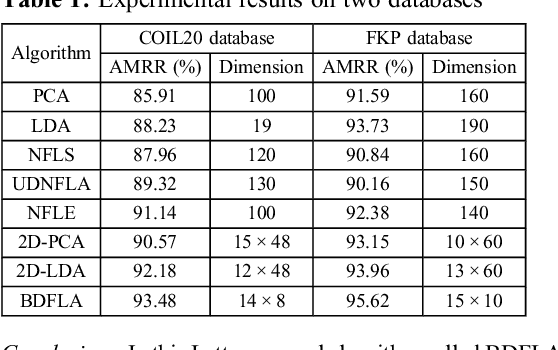
Abstract:A novel bilinear discriminant feature line analysis (BDFLA) is proposed for image feature extraction. The nearest feature line (NFL) is a powerful classifier. Some NFL-based subspace algorithms were introduced recently. In most of the classical NFL-based subspace learning approaches, the input samples are vectors. For image classification tasks, the image samples should be transformed to vectors first. This process induces a high computational complexity and may also lead to loss of the geometric feature of samples. The proposed BDFLA is a matrix-based algorithm. It aims to minimise the within-class scatter and maximise the between-class scatter based on a two-dimensional (2D) NFL. Experimental results on two-image databases confirm the effectiveness.
 Add to Chrome
Add to Chrome Add to Firefox
Add to Firefox Add to Edge
Add to Edge